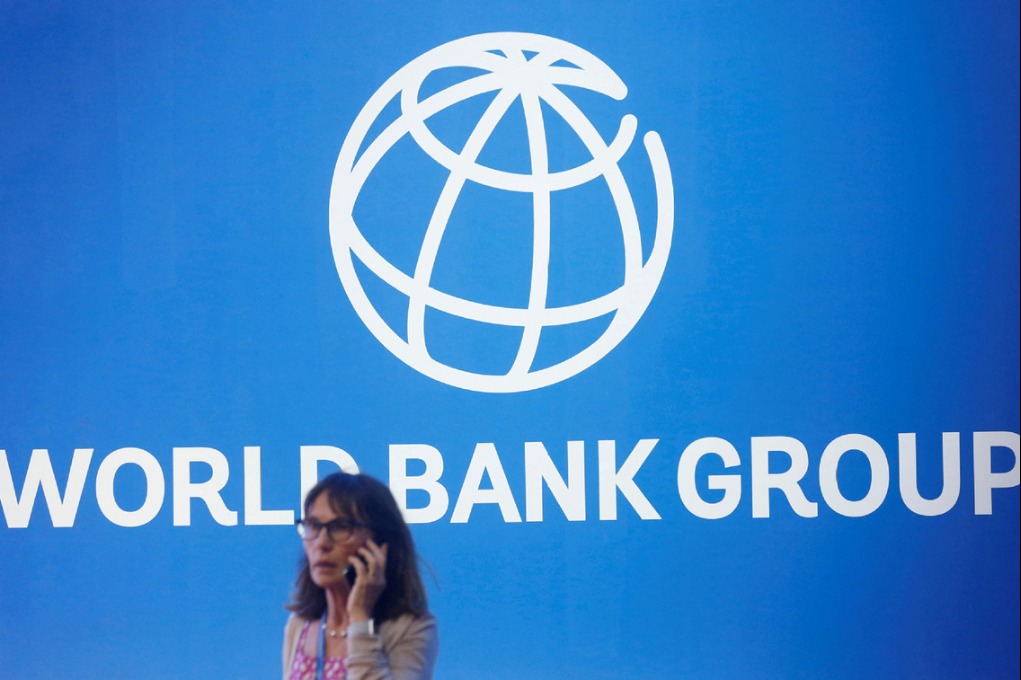Youths the conduit for rural revitalization
By Peter Ekblad | China Daily | Updated: 2022-08-12 07:03

International Youth Day, celebrated on Aug 12 every year, is an important occasion to acknowledge the crucial contributions of the more than 1.2 billion people aged 15-24 across the world to global development. Incidentally, 1 billion of those youths live in developing countries.
It is also a time to contemplate the systemic changes needed to better meet the needs of youths around the world, particularly in rural areas where a majority of the youths live.
In sub-Saharan Africa, for example, 70 percent of the total population is below the age of 30, the largest young generation the region has ever had. Ironically, the huge number of youths poses a challenge to sub-Saharan countries, as it is not easy to create new, decent jobs for such a large population.
Yet it is also an opportunity for those countries to invest in the future, by strengthening education and social services, and building human capital for the generation that constitutes the largest group in society. Simultaneously, in many regions around the world, young people are moving into cities at an increasing rate, causing a growing shortage of young workers and innovative perspectives so crucial to the revitalization of rural economies.
The welfare and stability of young people are closely interrelated with the resilience of society as a whole. In times of shocks, such as economic stagnation, the intensifying climate crisis, or the still ongoing pandemic, youths are often the first ones to lose their jobs. Especially, in many developing countries, youths often shoulder a disproportionately heavy burden when it comes to supporting a multigenerational family. One young person might often need to support his or her small children, retired parents, and even grandparents.
Incidentally, youth unemployment in such countries constitutes a major problem, which not only affects the youths themselves, but also reverberates across generations.
The Chinese government has long been a strong promoter of youth engagement, reflected in a number of policy documents, including the first "White Paper on Youth" published earlier this year. According to the white paper, in 2021, about 470,000 young people were involved in implementing China's Rural Revitalization Strategy at the grassroots level, contributing to the educational, agricultural and healthcare sectors.
Millions of young students have participated in rural social activities, going beyond the achieved poverty eradication and sustainable agricultural development. Youths have a strong incentive to protect nature as well as the human living environment, and use innovative methods, such as digitalization, new business models and modernized marketing and value chain connectivity, to help increase the incomes and living standards of rural people. Such activities will also strengthen food security for everyone.
Despite all this, rural youths in China are under immense pressure and have to work very hard to improve their livelihoods in order to create a better future for their families and themselves. Unsurprisingly, this pressure often results in many youths migrating to urban areas in search of better-paying jobs. As a result, the rural population in many areas comprises a high percentage of elderly people, and women outnumber men in the workforce.
Hence, prompting young people to return to rural areas is an integral part of China's rural revitalization policy as they are needed to replace the retiring older generation. Young people also have certain advantages in that they acquire new skills, are better educated than previous generations, and have an innovative mindset when it comes to invigorating rural areas.
To encourage youths to return and remain in rural areas, first, rural areas need to improve education opportunities for young people so they do not have as great a need to migrate to cities to receive education and vocational training.
Second, jobs need to offer attractive career prospects and decent salaries for young people so they can improve their life as well as that of their family members.
Third, to ease inter-generational pressure on youths, social services in rural areas for children and the elderly should be improved and expanded.
And fourth, rural youths who are ambitious to start small businesses should get access to financial services and be guided in sustainable investment practices. Engaging youths in rural and community activities and governance will also enhance their sense of integration in and accountability for their communities, benefiting rural revitalization in return.
The International Fund for Agricultural Development has been supporting China's agricultural modernization for more than 40 years, with an increasing focus on youths and guiding their transformative actions.
In recent years, IFAD has empowered young people to participate in agriculture by supporting farmers' organizations, organizing agricultural technology training programs, promoting innovation, creating employment opportunities, and building inclusive value chains. And in all ongoing projects, special focus is paid to creating more opportunities for youths, and allocating specific resources for encouraging entrepreneurship, youth-led enterprises and cooperatives in rural areas.
An apt example is the Gongyi Tea Specialized Farmer Cooperative. Established in a remote mountainous area in Xuzhou district, Yibin city of southern Sichuan province, it is supported by IFAD's Innovative Poverty Reduction Programme. The IFAD supports specialized farmers' cooperatives like this by financing new businesses that are specifically designed to increase the incomes of low-income smallholder farmers, youths and women, through innovative business models and marketing channels.
One of the 126 members of the cooperative is Gong Ming, a 23-year-old woman who grew up in the village and loves growing tea leaves, a skill she learned from her parents who, too, work at the cooperative. After graduating from high school, she had the opportunity to study cultural studies in college.
However, after earning her degree, she returned to her hometown, because she wanted to help her fellow villagers increase their incomes by using modern sales channels. She now uses her understanding of Chinese cultural heritage, of which tea is an integral part, to boost the online and live sales of the cooperative's products.
By selling directly to retailers and consumers across China and even abroad, the cooperative has not only increased its sales but also reduced the need for middlemen in the value chain. Gong also helps other cooperatives in the area to sell their products online and has trained some local women to conduct live sales.
China's Rural Revitalization Strategy has shown that young people such as Gong play a key role in promoting innovation, and take the initiative to modernize cooperatives and enterprises, foster agricultural science and technology, and expand new businesses and business models.
As such, it is necessary to help more and more youths to continue building upon their achievements, particularly by strengthening the intergenerational cohesion and boost social services such as childcare and eldercare in rural areas, which coupled with better livelihood opportunities will strengthen young people's socio-economic resilience.
The views don't necessarily reflect those of China Daily.
The author is a program analyst, International Fund for Agricultural Development China Office.
If you have a specific expertise, or would like to share your thought about our stories, then send us your writings at opinion@chinadaily.com.cn, and comment@chinadaily.com.cn.























